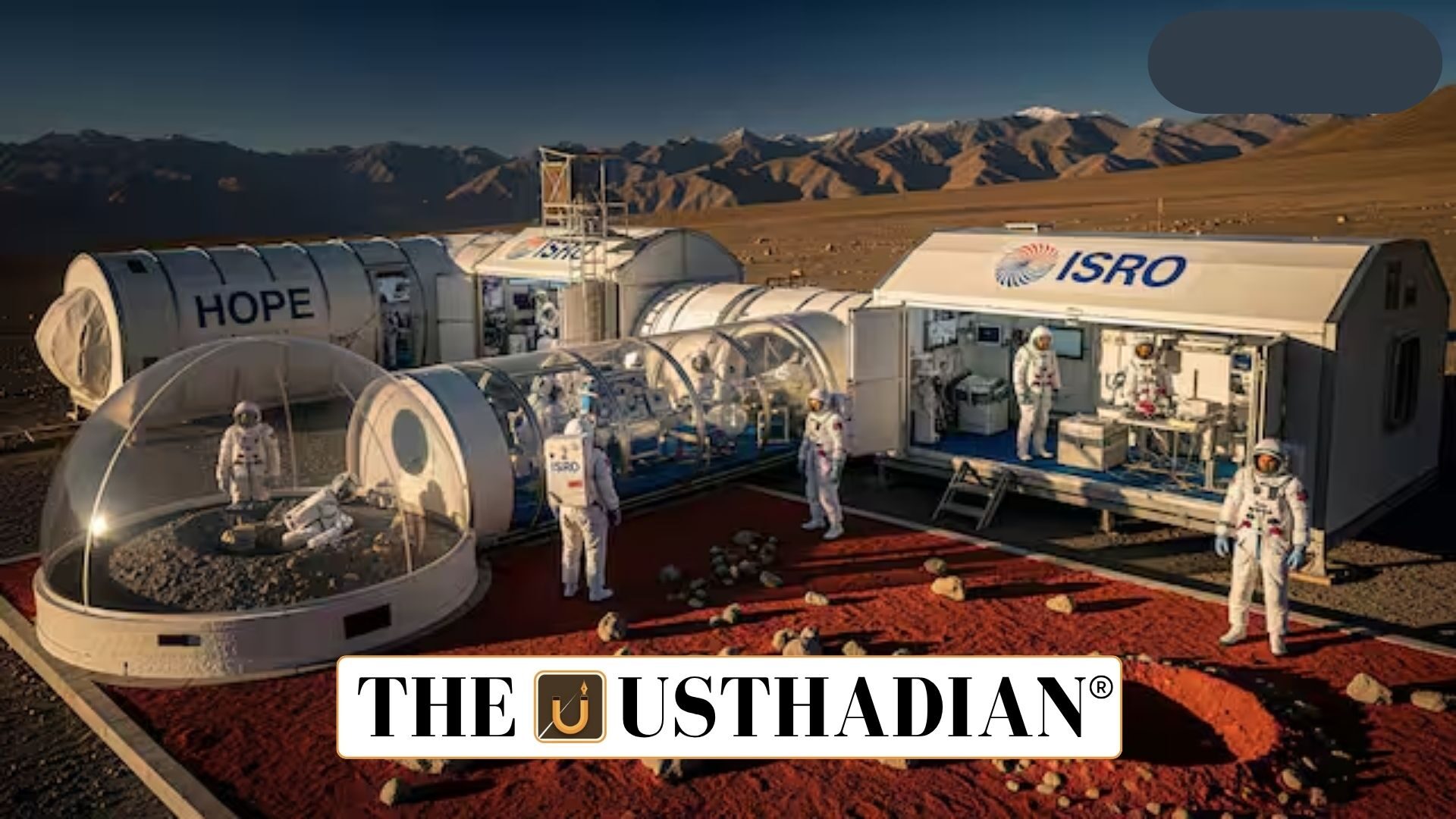New simulation base to support deep space goals
ISRO sets up HOPE simulation facility in Ladakh’s extreme terrain: The Indian Space Research Organisation (ISRO) has launched a pioneering initiative named HOPE (Himalayan Outpost for Planetary Exploration) in the Tso Kar Valley of Ladakh. This facility will function as a ground-based simulation of space-like conditions to prepare for future planetary exploration.
Developed by the Human Space Flight Centre (HSFC) in collaboration with Indian academic institutions and industries, the mission integrates real-time environmental testing to support human spaceflight and astrobiology research.
Key features and purpose of HOPE
The HOPE setup includes two major components: a crew living habitat and a technical utility unit. These modules are designed for seamless interaction, allowing continuous operation and life-support testing in isolated, harsh conditions.
The core aim is to mimic lunar and Martian environments. Researchers will conduct experiments in areas such as genomic changes, mental and physical health, and microbiological studies. Protocols for health monitoring, sample collection, and mission support systems will be validated here.
Why Tso Kar Valley is ideal for this mission
The Tso Kar region, located in the high-altitude plateau of Ladakh, offers rare Earth-based conditions similar to those on Mars. These include intense UV radiation, thin air pressure, sub-zero temperatures, and saline soil layers.
Such an environment allows scientists to simulate space missions without leaving Earth, making it possible to assess equipment durability, human adaptability, and biological responses in an extraterrestrial-like setting.
Static GK fact: Tso Kar is a salt lake in Ladakh’s Changthang region, situated at an elevation of around 4,500 meters above sea level.
India joins global analog research movement
This initiative places India among a select group of countries operating Earth-based analog space research stations. Examples include the Mars Desert Research Station in the USA, Flashline Mars Arctic Station in Canada, and BIOS-3 in Russia.
Such missions help train astronauts, test life-support systems, and develop long-duration mission plans before attempting space-based deployments.
Linked to India’s Gaganyaan human spaceflight project
The HOPE analog base strengthens India’s preparations for the upcoming Gaganyaan mission, which aims to send a crew of three astronauts into a 400 km low Earth orbit for three days.
LVM3, India’s most powerful rocket, has been selected for this mission. Before the manned flight, ISRO will carry out critical procedures such as pad abort tests, uncrewed vehicle flights, and parachute recovery systems.
Static GK Tip: The Gaganyaan programme will make India the fourth country to send humans into space using its own technology, following the USA, Russia, and China.
Static Usthadian Current Affairs Table
ISRO sets up HOPE simulation facility in Ladakh’s extreme terrain:
| Topic | Detail |
| HOPE Mission | Himalayan Outpost for Planetary Exploration |
| Location | Tso Kar Valley, Ladakh |
| Objective | Simulate extraterrestrial conditions for human missions |
| Led by | ISRO’s Human Space Flight Centre (HSFC) |
| Key Studies | Genomics, epigenetics, physiology, psychology |
| Terrain Significance | Mars-like: saline permafrost, high UV, low pressure |
| Gaganyaan Launch Vehicle | LVM3 |
| Gaganyaan Goal | Send 3 astronauts to 400 km orbit for 3 days |
| Global Analog Sites | MDRS (US), Flashline (Canada), BIOS-3 (Russia) |
| Static GK | Tso Kar is a saline lake in Ladakh over 4,500m altitude |








